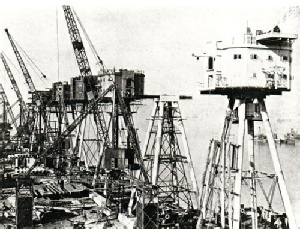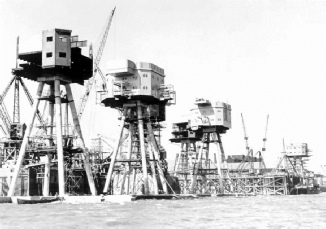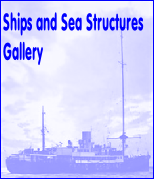© 2014-2023 Offshore Radio Museum



|
Official Name
|
Shivering Sands Towers
|
|
Code Name
|
Uncle Seven (U7)
|
|
Location
|
51.29.95 North
1.04.48 East
8 nautical miles (9.2 miles) from Herne Bay, and 8.75 nautical miles (10.06 miles) from Whitstable, Kent
|
|
Positioned
|
18th September to 13th December 1943
|
|
WW2 Military use
|
Army Sea Fort
|
|
Post WW2 Military use
|
Equipment was removed and a care and maintenance crew stayed on the Fort until 1956. The Ministry of Defence (MoD) finally decided to abandon the Forts in 1956
|
|
Stations Housed
|
Radio Sutch
Radio City
|
David "Screaming" Lord Sutch established Radio Sutch in May 1964 on Shivering Sands Fort and on 30th September 1964 Sutch withdrew from the station, passing it to his manager Reg Calvert who relaunched it as Radio City.
In the summer of 1966 the PLA attempted to remove the toppled G4 Gun Tower, but only managed to tear some steel from the top house. In the same year a team from the Radio Essex Fort Knock John broke into the PLA Tower, to salvage the ammunition hoist and generator parts.
In June 1966 Shivering Sands was occupied by a boarding party from a rival radio group in a dispute about ownership of a transmitter. The chain of events that flowed from this led to the shooting dead of Radio City’s owner, Reg Calvert.
Following Reg Calvert's death his widow, Dorothy Calvert, ran the station, until it was finally prosecuted and closed on 8th February 1967. A caretaker crew stayed on Shivering Sands Fort for a time after the station closed, removing much of the equipment.
Roy Bates of Radio Essex again raided the Fort and removed the original gantry lights after Radio City had left.



Above: two views of Shivering Sands Fort under construction at Gravesend
Left: receiving supplies 1944


Top: Shivering Sands Fort when being used by Radio City
Bottom: An aerial view clearly showing the Radio City mast and the remains of the Gun Tower demolished in an accident in 1963
A former Radio City DJ, Alexander Dee (Dennis Swinnerton) and his girlfriend took over Shivering Sands for a period until 1969 planning a to launch a Hippy Commune .
In 1975 a film crew used Shivering Sands Fort to shoot the film Flame, based on the book by John Pidgeon it starred the 1970's rock band 'Slade' playing a fictious 1960's group.
The Port of London Authority (PLA) cut away the roof of the Searchlight Tower in 1990 so that helicopters could be used to service the gauges. In 1992 it was decided the Fort had become too dilapidated for continued use, and a new Large Automated Buoy was moored near the Fort to provide the wind and tide readings.
In mid 2004 a survey was commissioned by the PLA on behalf of the UK Government of both Shivering Sands and Red Sands Army Forts with a view to demolition.The cost was estimated to be in the region of £9 million.


The Port of London Authority (PLA) took over the isolated Searchlight Tower in the early 1960's installing automated wind and tide gauges.
Also in the early 1960s Shivering Sands was used to conduct radar prediction tests and special paint trials.
On 7th June 1963 the coaster Rybersborg collided with the G4 Gun Tower which was toppled and landed on ship’s deck before sliding into the sea.


Thanks to Martin van der Ven for allowing us to use some additional information from the Broadcasting Fleet section of the Offshore Radio Guide in this Gallery




































